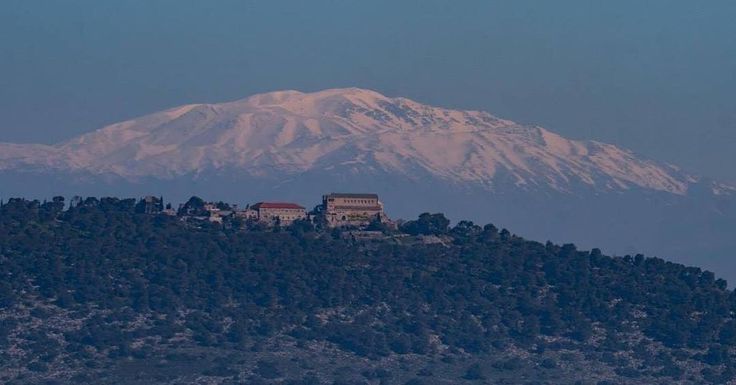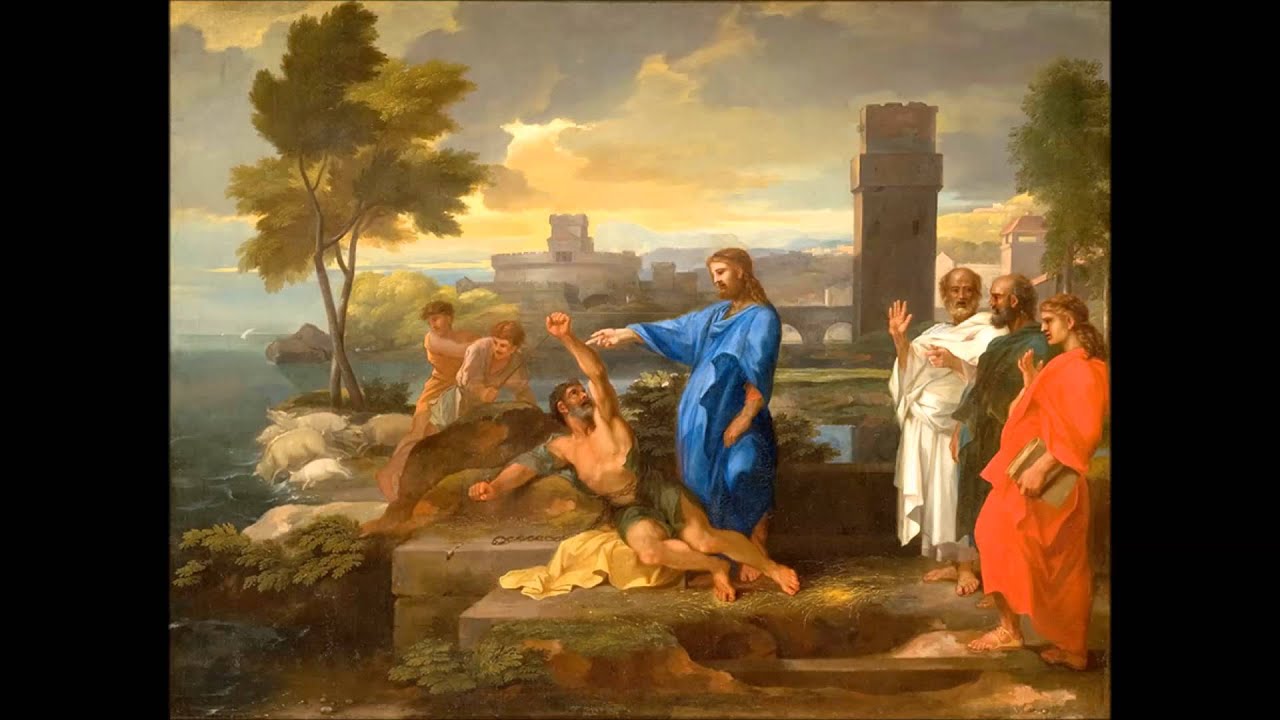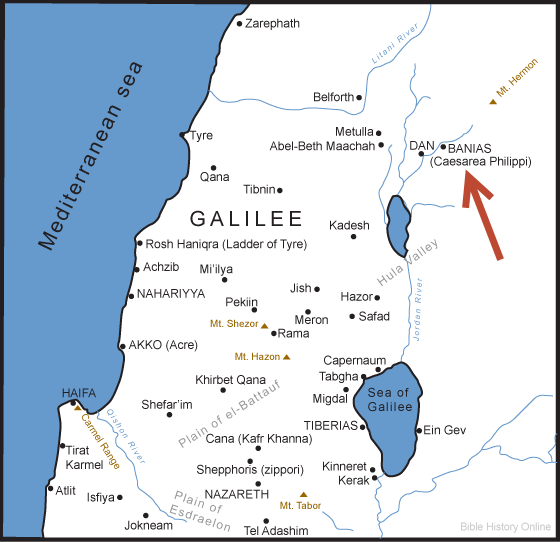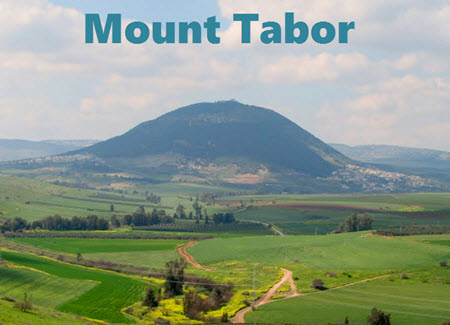Jesus' Hidden Mission

Christians are well aware of the sin of Adam and Eve and the curse God put upon them, as well as upon the Serpent, resulting in mankind's escalating selfishness, disobedience, and sinning nature—even in the chosen people of God, Israel. From the beginning, God had a plan to redeem His imagers. The Bible tells us that human beings were created in God’s image, perfect and sinless, but, since the fall, all humans are “born in sin" and "conceived in iniquity” (Gen 1:26-31, Ps 51:5). Man (God's imagers) were forever changed when Eve believed Satan’s lies and Adam ate of the fruit. God's plan was to become a man, the Son of God, and through the life and works of Christ God would provide a cure to save the sinful people from death.
As was covered in parts 1 and 2, sin did not just involve God's imagers on earth. There are imagers in heaven as well. While humans image God on earth, angelic beings image God in the spiritual world. They do God’s bidding in their own sphere of influence. They are the angels (Watchers, seraphim, cherubim), and sons of God (bene ha-elohim or beney 'elohim) in Yahweh's divine council. These spiritual beings seem pretty perfect but they also have free will as man does, and can choose to go against God's will—and some have.
In Psalm 82:1 we learn that God takes His place as the leader of the divine council. Asaph, the psalmist, was a prophet often writing about God’s judgment of Israel’s enemies. This psalm records that during this meeting of the council God criticizes the "gods" ('elohim) for their unfairness and wickedness in carrying out the responsibilities He has assigned to them. Asaph tells us that their sin and rebellion have shaken the foundations of the earth and because of their corruption and disobedience they will "die like men" (Heb. 'adam). You can only die like men if you are outside of heaven.
The Apostle Paul refers to Jesus as the image of God (2 Cor 4:4). Paul also, in no uncertain terms, explained that Jesus fulfilled each and every single shadowy and typical aspect of the old covenant ceremonial law (Col. 2:16-17), just as He came to fulfill all of the Old Testament promises and prophecies (2 Cor. 1:18-20). Other New Testament authors also wrote of these fulfillments. What did Christ show us in His incarnation that we need to be? A perfect character in harmony with God’s law of love. This was the new covenant promised given through the Prophet Jeremiah.
This is the covenant I will make with the people of Israel after that time,” declares the Lord. “I will put my law in their minds and write it on their hearts. I will be their God, and they will be my people. No longer will they teach their neighbor, or say to one another, ‘Know the Lord,’ because they will all know me, from the least of them to the greatest.” (Jer 31:33-34)
Prior to Jesus' birth and death the Israelites under the old covenant law—as spelled out in the first three commandments—was to love God with “all your heart, with all your soul, and with all your mind.” It was a command to love. Under the new covenant God writes His law in our hearts and the law is a transcript of His character. Jesus gives us a new command "Love one another. As I have loved you, so you must love one another" (John 13:34).
God’s love has been poured out into our hearts through "the Holy Spirit which has been given to us" (Rom 5:5). With the new Law, the Spirit of Christ is given to us, not only loving us but loving others through us. Under the new Law Christ lives within us and through Him we image God.
 Jesus Begins His Mission
Jesus Begins His Mission
When Adam sinned by eating of the tree of which God told him not to eat, Adam turned the garden-temple into a barren wilderness. The world was now a place of sin, rebellion, misery, and danger. The second Adam (Jesus) entered the world to undo all that Adam did. In order to do so, He had to begin His ministry as the last Adam—not in a garden but in the place that symbolized the barrenness and cursed nature of the fallen world. Jesus was not in the garden-temple paradise like the first Adam, but He was in the desert with the wild beasts. (Mark 1:13)
After Jesus' baptism by John the Baptist, Jesus is led in the wilderness by the Spirit where He fasts for forty days and nights in order to prepare for His encounter with the devil and his temptations. Moses and Elijah likewise had fasted and prayed for 40 days and nights in the wilderness in preparation for their work for God. Moses fasted for 40 days when he went up to the mountain to receive the commandments of God written on stone tablets and afterward went he went up again after breaking the tablets. (Deut. 9:9-18, Exodus 34:28). Elijah traveled and fasted 40 days and nights through the wilderness to the mountain of God. (1 Kings 19:8). Jesus knew the importance of fasting to cleanse, purify and seek God's will while in the wilderness.
After Jesus fasts for forty days and forty nights, He is tempted three times by Satan. Not only are these temptations from Satan to Jesus connected to Adam and Eve's sin but to Eve's seed (God's imagers) who follow and the Israelites God made as His own nation after Babel.
Why did God specifically mention Eve's seed when He cursed the Serpent? (Gen. 3:14-15) The Serpent has a seed and so would Eve and God promises a Savior who would crush the head of Satan through Eve. We don't hear much about who becomes Serpent's seed in the Old Testament until it is recorded in the New Testament where John the Baptist condemned the Pharisees and Sadducees as a “brood of vipers” in Matthew 3:7. A “brood of vipers” is a “family of snakes” and vipers include some of the deadliest snakes. Thereby, John was essentially calling the religious leaders “deadly sons of serpents.” That was a strong denunciation of those who believed they were the "chosen people" and saved through their heritage and an accusation that Jesus repeated later to the Pharisees telling them they are of "their father the devil" (John 8:44).
Yet are they really the offspring of the devil or Satan? Immediately after the curses pronounced by God Adam has intercourse with Eve and she bares a son, Cain. After bearing another son, Abel, immediately the story leads to Cain killing Abel out of jealousy and Yahweh cursing Cain. Very few hold the belief that Cain was conceived from Eve having union with the Serpent but just because Adam had relations with Eve does not mean she had not already conceived with Satan. Yet, the likelihood of such a union is well hidden, if that were the case. Still, the first offspring of Adam and Eve does evil, following the evil of the first evil act in the Bible through the Serpent.
In 1 John 3, John is speaking of the need to be love in action. There he gives Cain as the example as one who lacks the love man should have towards his brother which causes him to act selfishly and in this case, to slay his own blood brother out of jealousy. John says "not of Cain, who was of the evil one" (1 John 3:12). Whether Cain was an actual seed of the Serpent or not, his actions were evil and that ties him spiritually to the seed of Satan.
In Matthew’s Gospel, he emphasized that Jesus fulfills the human failures of Adam and Eve. When Satan appears to Eve (Gen. 3) tempting her with the fruit of the forbidden tree she succumbs to the three sins that are defined in 1 John:
"For all that is in the world, the lust of the flesh, and the lust of the eyes, and the pride of life, is not of the Father, but is of the world" (1 John 2:16).
Compare Eve's sins with John's definition:
"And when the woman saw that the tree was good for food (Lust of the flesh), and that it was pleasant to the eyes (Lust of the eyes), and a tree to be desired to make one wise (Pride of life), she took of the fruit thereof, and did eat, and gave also unto her husband with her; and he did eat" (Genesis 3:6).
The forty days and nights are also a parallel to the forty years the Israelites spent wandering the desert because of their lack of faith in God. When God brought Israel into the wilderness, He promised them covenant blessings and curses (Deut. 28:15). There in the wilderness, Yahweh tested them and Israel failed and thus they failed to obtain the covenant blessings and they never saw the Promised Land. In the wilderness temptations of Christ we also see Satan taking the same approach that he did with Eve:
Lust of the flesh…”turn these stones into bread” (Matthew 4:3-4);
Lust of the eyes… “all the Kingdoms of the world” (Matthew 4:8-10);
and the Pride of life…”cast thyself down” (Matthew 4:5-7).
Jesus replies to all three temptations with Scripture. The lust of the flesh He replies with quoting Deut. 8:3 "man does not live by bread alone but by every word that proceedeth out of the mouth of God". This corresponds with the Israelites grumbling about the food they were eating in the wilderness. (Exodus 16)
With the lust of the eyes, the devil already had control over the kingdoms of the world (Ephesians 2:2) but was now ready to give everything to Christ in return for His allegiance. But the Lord replies sharply, “You shall worship the Lord your God and serve Him only” (Deut. 6:13). Satan knew Jesus was the Son of God. He tried to get Jesus to violate his relationship with God by offering Him the nations of the world that he had rule over. Jesus came to reclaim them but not by Satan giving him back the nations. God’s plan was to have Jesus wrongfully put to death and rise again and bring all people from all nations, Jews and gentiles, to come into His family that Jesus’ death atoned for.
And the last temptation of pride the Lord responds to the temptation to "put God to the test" by quoting Deut. 6:16: “It is written, thou shall not tempt the LORD your God" as ye tempted him in Massah. It was at Massah that the Israelites argued with Moses about water and Moses rebuked them for testing God and questioning whether God was actually present with them in the wilderness (Exodus 17:2).
As noted above, the Last Adam, Jesus, (1 Corinthians 15:45-49) appealed to Scripture and quoted from the book of Deuteronomy—a book that summarizes the lessons that God taught the Israelites during the time of their sojourning in the wilderness. Ultimately, they failed their tests but the true Israel of God (Jesus) would not. By quoting Deuteronomy, Jesus implies that he is the faithful Son of God in the way that his earthly father Adam was not, and in a way that his nation Israel was not. Jesus took what Israel should have taken—the truths God taught them in the wilderness—and did what Israel should have done in overcoming the temptations of the evil one in the wilderness.
Returning to the seed of the Serpent, in the preceding articles I share scholarly views that in the Old Testament there were three major rebellions: The Fall; the Watchers sin; and the Tower of Babel. The promised seed of Eve the Messiah would not just revoke the claim of Satan on human souls and estrangement from God, solving the predicament of the Fall, He would reverse the impact of the Watchers' transgression and also bring the nations (re: Babel) back into relationship with the true God by defeating the principalities and powers that governed them.
Since the modern Church does not understand what the ancient Jews knew about the angelic intervention with mankind they misinterpret the meaning in Gen. 6:1 as to who the sons of God are. Thereby Christians will not readily see why the world became so profoundly depraved after the Watchers sinned with human women and taught mankind how to use magic, incantations, and weapons of war and thereby, becoming more selfish so they could become less like God's image. Meaning, mankind would not be loving others. The Jews of the day believed that the messiah would rescue humanity from their self-destruction, which catalyst was the Watcher's influence in what they had taught humankind and their sin which created their giant offspring. Hence, Jesus came to show the way of love to rectify this ungodly intervention with mankind.
Yet there is more that connects Jesus' mission with the Watchers and their offspring. After returning from the wilderness Jesus goes to his hometown and synagogue where he is rejected after basically telling them that he was the promised one to come, whereby the people grow angry and attempt to throw him off a cliff but he escapes. Jesus had a purpose in going there first. Jesus could not work miracles in his hometown of Nazareth because most of the people demonstrated unbelief. A few were healed before He left because they did have faith. His purpose was to perform miracles in the presence of faith. Only a few here had faith to come to Him for healing. He knew the vast majority of Jews would reject Him, and as a nation, they eventually did under the guidance of the Sanhedrin. Jesus' disciples and we readers in the future learn the lesson of rejection and not to let it stop us from doing the works of God because of someone's unbelief.
D emons
emons
From Nazareth Jesus starts healing people, casting out demons, and preaching the Word of God. If you read about the many miracles of healing Jesus performed about half of them involve casting out demons. While some Christians do not believe in demons, or that demons only existed in Jesus' time, there is plenty of proof that they continue to exist today and torment the afflicted who delve into areas the Bible warns us to stay away from.
There is nothing in the Bible that states where demons come from but we gain some insight through studying Scripture. The first prevailing idea is that demons are fallen angels, which comes from Rev. 12:9.
“The great dragon was hurled down—that ancient serpent called the devil, or Satan, who leads the whole world astray. He was hurled to the earth, and his angels with him.”
When the serpent/Satan/devil fell he took some of the angels with him—one-third of them, according to Revelation 12:4. This does not state that they are demons though. Some believe this fall happened before the creation of man but that is not what the Scripture says. It is talking about the time of the birth of the Messiah in Rev. 12:4-5. "And the dragon stood before the woman who was about to give birth, so that when she bore her child he might devour it. She gave birth to a male child, one who is to rule all the nations with a rod of iron, but her child was caught up to God and to his throne." And in Rev. 12:17 “Then the dragon became furious with the woman and went off to make war on the rest of her offspring, on those who keep the commandments of God and hold to the testimony of Jesus Christ”.
Another view that is gaining acceptance in the scholarly realm is that demons are the disembodied spirits of the Nephilim who are mentioned in Genesis chapter six. The Nephilim are the offspring of the Watchers and human women. While the Nephilim were destroyed in the flood, Genesis 6 mentions that they were on the earth after the flood as well. Their spirits remained on the earth after their death. We know that when a human dies, he goes either to heaven or hell. But what about these beings who are neither fully human nor fully angelic? Where would they go when they died? It could well be that this is why evil spirits/demons seem to desire a body to possess having been created on earth. This origin of demons was actually a common Jewish belief, as well as the apostles, and the early church fathers taught this as well.
While not scripture, the extra-Biblical 1 Enoch that was widely read and known by the Jews states the Nephilim offspring of the Watchers is the origin of demons and evil spirits. The Watchers were said to have been placed in everlasting chains awaiting judgment and thus are not the evil spirits.
"And the angels who did not stay within their own position of authority, but left their proper dwelling, he has kept in eternal chains under gloomy darkness until the judgment of the great day" (Jude 1:6).
“For God did not spare even the angels who sinned. He threw them into hell, in gloomy pits of darkness, where they are being held until the day of judgment” (2 Peter 2:4).
From 1 Enoch:
15.2 And go say to the Watchers of Heaven, who sent you to petition on their behalf: You ought to petition on behalf of men, not men on behalf of you.
15.3 Why have you left the High, Holy and Eternal Heaven, and lain with women, and become unclean with the daughters of men, and taken wives for yourselves, and done as the sons of the earth, and begotten giant sons?...
15.8 And now, the giants who were born from body and flesh will be called Evil Spirits on the Earth, and on the Earth will be their dwelling.
15.9 And evil spirits came out from their flesh, because from above they were created, from the Holy Watchers was their origin and first foundation. Evil spirits they will be on Earth and ‘Spirits of the Evil Ones’ they will be called.
Part of Jesus' mission was to put the rebellious angels and demons on notice that God was taking back His creation and bringing an end to their dominion through the person of the Only Begotten Son. Notice was also given to the Jews and Gentiles who witnessed these cleansings. Interestingly, the demons recognized Jesus as the Son of God before He even said a word. "And unclean spirits, when they saw him, fell down before him, and cried, saying, Thou art the Son of God" (Mark 3:11). "And devils also came out of many, crying out, and saying, Thou art Christ the Son of God. And he rebuking them suffered them not to speak: for they knew that he was Christ" (Luke 4:41). In Mark 5:1-20, the demons beg Jesus not to torment them and to allow them to enter the pigs. Christ's authority was recognized even by the demons.
Originally, Jesus had twelve disciples, corresponding to the twelve tribes of Israel. They were Jews and from God’s chosen people. Later, Jesus commissioned seventy more to be His disciples whereby in His name they too could cast out demons and bring healing to many more people. Seventy (seventy-two in some translations as they add the names of two leaders) corresponds to the nations given to the sons of God to rule. Jesus demonstrated His authority over demons, announcing the end of their dominion over man. Now these seventy would send the message that the Son of God was empowering the people of God to take back the nations.
Luke 10:17 I saw Satan fall lie lightning from heaven” 10:18 was the great reversal was underway.
 Caesarea Philippi
Caesarea Philippi
At the end of Jesus' three-year mission, the time was coming to be crucified. Jesus brings His disciples to a place called Caesarea Philippi which stood in a lush area near the foot of Mount Hermon (more on Hermon to follow). The history there is that in the Old Testament times the region around Caesarea Philippi was called Bashan. In the Ugaritic language Bashan and was pronounced bathan, which literally meant “place of the serpent.” “Bathan” is a common word for “serpent" across all the Semitic languages, biblical Hebrew included.
Bashan is the region including the two main cities of Ashtaroth and Edrei, which both the Bible and the Ugaritic texts mention as abodes of the Rephaim giants (Josh 12:4-5). It was ruled in the days of Moses and Joshua by the Amorite kings, Og and Sihon, who were associated with the ancient giant clans: the Rephaim and the Anakim (Deut 2:10-11; Josh 12:1-5).
Ugaritic is an ancient near eastern language that is closely related to biblical Hebrew. It is an important source of divine mythology. Ugaritic literature contains many council scenes where the chief deity 'El presides over the council of his divine sons, who stand before him on the holy Mount of Assembly. El is one of the names the Israelites have for Yahweh.
In 1929 the city of Ugarit an Amorite kingdom (located where modern Syria is today) was uncovered and clay tablets with their previously undiscovered language. It flourished around the time of the Exodus. The city's demise can be accurately dated to around 1200 BC, which means that their tablets, and the ideas they convey, were around earlier than most of the books of the Hebrew Bible.
The people of Ugarit believed that the cities of Ashtaroth and Edrei were the entryway to the Underworld—the gates of Sheol. In Old Testament times, the northeastern area of Israel became a center for Baal worship. Jereboam (the first king of the northern Kingdom of Israel) built a pagan religious center at Dan setting up two golden calves for the Israelites to worship—just south of Mount Hermon—enticing the Israelites into worshiping Baal instead of Yahweh.
Caesarea Philippi was an especially unique location because it stood at the base of a cliff where spring water flowed. At one time, the water ran directly from the mouth of a cave set at the bottom of the cliff. There was a deep hole, a natural abyss, at the back of the grotto (since destroyed in an earthquake). At the bottom of the abyss was an underground river. Josephus described it as "a mountain that is raised to an immense height, and at its side, beneath, or at its bottom, a dark cave opens itself, within which there is a horrible precipice, that descends abruptly to a vast depth." This cave possessed an underground stream so deep, it was considered bottomless.
In Jesus' time, this cave became the grotto and shrine of Banias (Panias) as the Greeks called it in honor of Pan, where they worshipped this god. It was renamed Caesarea Philippi in 14 CE. To the pagan mind, the cave and spring water at Caesarea Philippi was believed to be a gateway to the underworld and became known as the “gates of Hades,” the underworld abode of dead souls. In order to entice the return of their god, Pan, each year, the people of Caesarea Philippi engaged in horrible deeds, including prostitution and sexual interaction between humans and goats as well as animal and infant sacrifices thrown into the bottomless pool inside.
This was the place Jesus took His disciples and God revealed to Peter that Jesus was the Christ, the Son of the living God. Here is what happened, as recorded by Matthew:
When Jesus came to the region of Caesarea Philippi, He asked His disciples, “Who do people say the Son of Man is?”
They replied, “Some say John the Baptist; others say Elijah; and still others, Jeremiah or one of the prophets.”
“But what about you?” He asked. “Who do you say I am?”
Simon Peter answered, “You are the Christ, the Son of the Living God.”
Jesus replied, “Blessed are you, Simon son of Jonah, for this was not revealed to you by man, but by My Father in heaven. And I tell you that you are Peter, and on this rock I will build My church, and the gates of hell will not overcome it. I will give you the keys of the kingdom of heaven; whatever you bind on earth will be bound in heaven, and whatever you loose on earth will be loosed in heaven” (Matthew 16:13-19).
In that pagan setting, Jesus encouraged his disciples to build a church that would overcome the worst evils. Jesus was challenging the well-established pagan worship in Caesarea Philippi by saying its "gates of Hades (hell) will never be able to prevail against His church. Though Christian traditions debate the theological meaning of "this rock", it seems clear that there was also a symbolic meaning. His church would be built on the "rock" of Caesarea Philippi that was literally filled with pagan idols in its niches, replacing the pagan gods. Jesus presented a clear challenge to His people then and now. He didn't want his followers hiding from evil: He wanted them to storm the gates of hell.
Dr. Heiser in his book, The Unseen Realm, suggests "Jesus’ words to His disciples and Peter’s response is an obvious challenge to the past evil and the powers of darkness. He is announcing His divinity at these strategic locations “Here I AM! Come and get me!” No one, not even Jesus’ disciples, knew that God’s plan all along was to be put to death."
Jesus then begins to reveal and teach to His disciples that He will be put to death. Peter has a hard time believing this and takes Jesus aside and challenges Him whereby Jesus had to rebuke him, "Get thee behind me Satan! (Matt. 16:22-23).
 The Transfiguration on Mount Hermon
The Transfiguration on Mount Hermon
After the event at Caesarea Philippi, Jesus didn’t stop at Caesarea Philippi in challenging the powers of darkness. He then takes Peter, James, and John up Mount Hermon and shows them who He really is. The mountain where Jesus took them was probably Mount Hermon, a short distance to the north of Caesarea Philippi. Mount Hermon (meaning ‘sanctuary’) is the highest mountain in the region at 9233 ft / 2815m above sea level and covered with snow most of the year, which provides meltwater during the dry spring and summer to feed the River Jordan. The other mountain of choice is Mount Tabor standing at a little less than 2,000 feet. Tabor was the seat of a Roman garrison as it was a good look-out place for any activity below. Yet, for its lack of height and privacy, Mount Hermon with its close proximity to Caesarea Philippi and much higher seems to be the likely place of the Transfiguration.
Mount Hermon is part of a range that divided the land of Israel from ancient Syria and Phoenicia (modern Lebanon). This mountain forms Israel's northeastern border with Syria and Lebanon. Mount Hermon's southern slopes are known as the Golan Heights in Israel and where the Jordan River begins and flows down to the Sea of Galilee. The Phoenicians (Canaanites), worshippers of Baal actually considered Mount Hermon to be the mountain of Baal. Many temple sites have been discovered in its caves as well, with more than 20 temples to various pagan gods having been surveyed on the mountain. The cult center Baal-Hermon is mentioned several times in the Old Testament (Judges 3:3; 1 Chron. 5:23). Baal was the main attraction there long before Alexander the Great instituted the worship of Pan.
 Historically, Mount Hermon was home to the Sidonians, who called it Mount Sirion, and the Amorites, who called it Senir (Deuteronomy 3:9) Psalm 29:6. Moses defeated Og King of Bashan on Mount Hermon before being prohibited from crossing the Jordan River further into the Promised Land (Deuteronomy 3:8–10).
Historically, Mount Hermon was home to the Sidonians, who called it Mount Sirion, and the Amorites, who called it Senir (Deuteronomy 3:9) Psalm 29:6. Moses defeated Og King of Bashan on Mount Hermon before being prohibited from crossing the Jordan River further into the Promised Land (Deuteronomy 3:8–10).
It was on Mount Hermon that 1 Enoch and Jubilees state that the sons of God (Watchers) of Genesis 6 descended and began procreating with human women which then produced the “Nephilim” (‘bene Elohim’ in Hebrew). The fallen angels took an oath together to bind themselves with curses to carry out the plan to leave their sacred positions and then descend on Mt Hermon. Considering Mount Hermon's history of pagan worship to Baal, a part of Bashan, and the connection with it being the abode of the Rephaim giants, the mountain definitely has a special cosmic-geographical significance.
Initially, the three disciples would have thought they were praying in a high place as they usually did. However, their experience on the mountain, caused them to be in awe when they saw Jesus. "His face and His garments were pure light, and together talking with Him were Moses and the prophet Elijah. (Matt. 17:1-3) A bright cloud formed above them and it emanated God’s voice saying: “This is My beloved Son, in whom I am well pleased. Hear Him!” (Matt. 17:5-6).
Jesus could have chosen this special place to show his personal and unique relationship with God, together with his close ties to the most respected prophets and leaders of the Jewish religion, Moses, and Elijah. The significance of the ‘transfiguration of Jesus to Jewish observers would have been quite clear. After Jesus had spoken to his disciples about storming the gates of hell, he also gave them another word of caution: "If anyone is ashamed of me and my words, the Son of Man will be ashamed of him when he comes in his glory" (Luke 9:26). In the Old Testament, the glory of the Lord – the ‘Shekinah’, the radiant, shining presence of Yahweh – had appeared to Moses on Mount Sinai (Exodus 24:16). The same cloud filled the temple in Jerusalem (1 Kings 8:11). When Jesus was born, the glory of the Lord appeared to the shepherds in the fields outside Bethlehem (Luke 2:9-20). On the high mountain, the glory of the Lord appeared again to Moses, as it previously had on Mount Sinai. But this time, it was revealed that Jesus (as the Lord Yahweh) all along had been this glory of the Lord – the visible personal presence of God.
Not only was the Transfiguration an undeniable demonstration of Jesus as the Son of God but, assuming Mount Hermon was indeed the location, the event would have signaled to the powers of evil moreover that His kingdom and authority would triumph, serving notice on the very site where great evil had occurred before.
Conclusion
Although it is only given in Luke’s account, after the Mount of Transfiguration we read in the next chapter (Luke 10) how Jesus sent out 70 disciples into the countryside in teams of two to heal the sick, drive out demons and proclaim that “the kingdom is near.” Upon their return and with reports of great excitement they said to Jesus, “even the devils (demons) are subject unto us through thy name.” (Luke 10:17) The “sending out of the 70” is an example and demonstration of what the Church was to employ as one of its primary missions: to destroy the works of the devil under the authority of Jesus Christ.
Because of the fall, Satan had rightful jurisdiction over mankind. Because of Adam’s sin, “death spread to all” (Rom 5:12). The Serpent was cursed to rule over the realm of the dead, hell. Because of the fall, everyone is destined to die and go to the realm of the dead—where Satan reigns. Jesus’ death and resurrection provided a way out from that death for humanity—we only need to believe to become members of God’s family and kingdom. Thereby, we become members of the body of Christ. Then we will be set free from the curse of death.
While we need do nothing to keep this gift, as we are given it through the grace of God when we believe, we do have a duty to spread the Gospel sharing the good news to any and all and to destroy the works of the devil under the authority of the Lord Christ wherever and whenever possible.